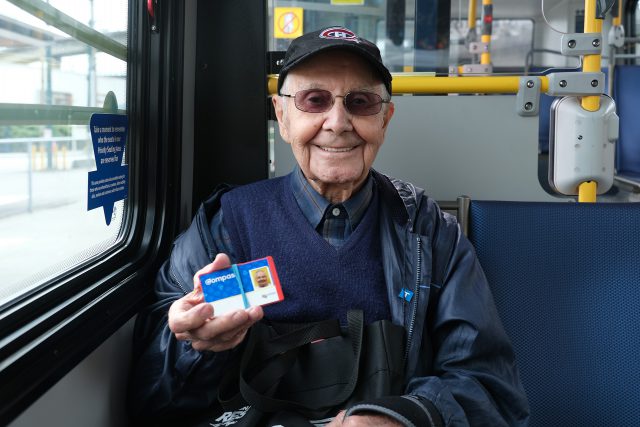Charging ahead into transit’s next frontier: battery-electric buses
Charging ahead into transit’s next frontier: battery-electric buses


We’ve set an ambitious goal: a bus fleet that’s powered with 100 per cent renewable energy by 2050.
And we’re well on our way to our goal with more than half of TransLink’s fleet now operating on clean energy, including compressed natural gas and hybrid diesel-electric buses, as well as zero-emission trolleybuses.
Starting today, we’re charging full speed ahead with our battery-electric bus pilot! The buses, which are smoother and quieter than the rest of our fleet, are rolling into service on route 100 Marpole Loop/22nd Street Station.
This pilot project is part of a pan-Canadian initiative led by the Canadian Urban Transit Research and Innovation Consortium (CUTRIC).
It’s a Canadian first to test the cross compatibility of equipment from four separate manufacturers. Nova Bus and New Flyer are providing the buses, while ABB and Siemens are providing on-route overhead fast chargers.
Over the course of the project, we’ll collect data on bus and charging station performance, maintenance, and the overall customer experience. The pilot will provide valuable information for our Low Carbon Fleet Strategy, which envisions a future with a zero-emission bus fleet.
Transportation technology is evolving rapidly, bringing new opportunities and challenges, and changing how we move. Battery-electric buses represents the new frontier in public transit.
Each bus is expected to reduce 100 tonnes of greenhouse gas emissions and save $40,000 in fuel costs per year compared to a conventional diesel bus.
For us in Metro Vancouver, transit vehicles powered by electricity has been a part of our region since the beginning.

When the streetcar and interurban arrived to connect the region, they were powered by a single overhead power line, called a trolley wire. Then when the streetcar and interurban network was decommissioned in favour of buses, a second trolley wire, parallel to the existing one, was added for the trolleybuses.
While other cities have replaced trolleybuses with diesel-powered buses, we’ve remained committed to them. Our trolleybus network is the only one in Canada and one of the largest in North America.
The four new battery-electric buses adds to our zero-emission fleet. And probably the best part, six more buses are on the way! Stay tuned.








TransLink is way behind other big cities. London has over 200 electric Double Decker buses.
@Nathan Davidowicz, don’t forget that Vancouver has 250+ electric trolley buses; a service which has been available for over 70 years.
My main concern is our highways and freeways. Does the electric bus are capable to do speeds up to 100 km/hr or higher?